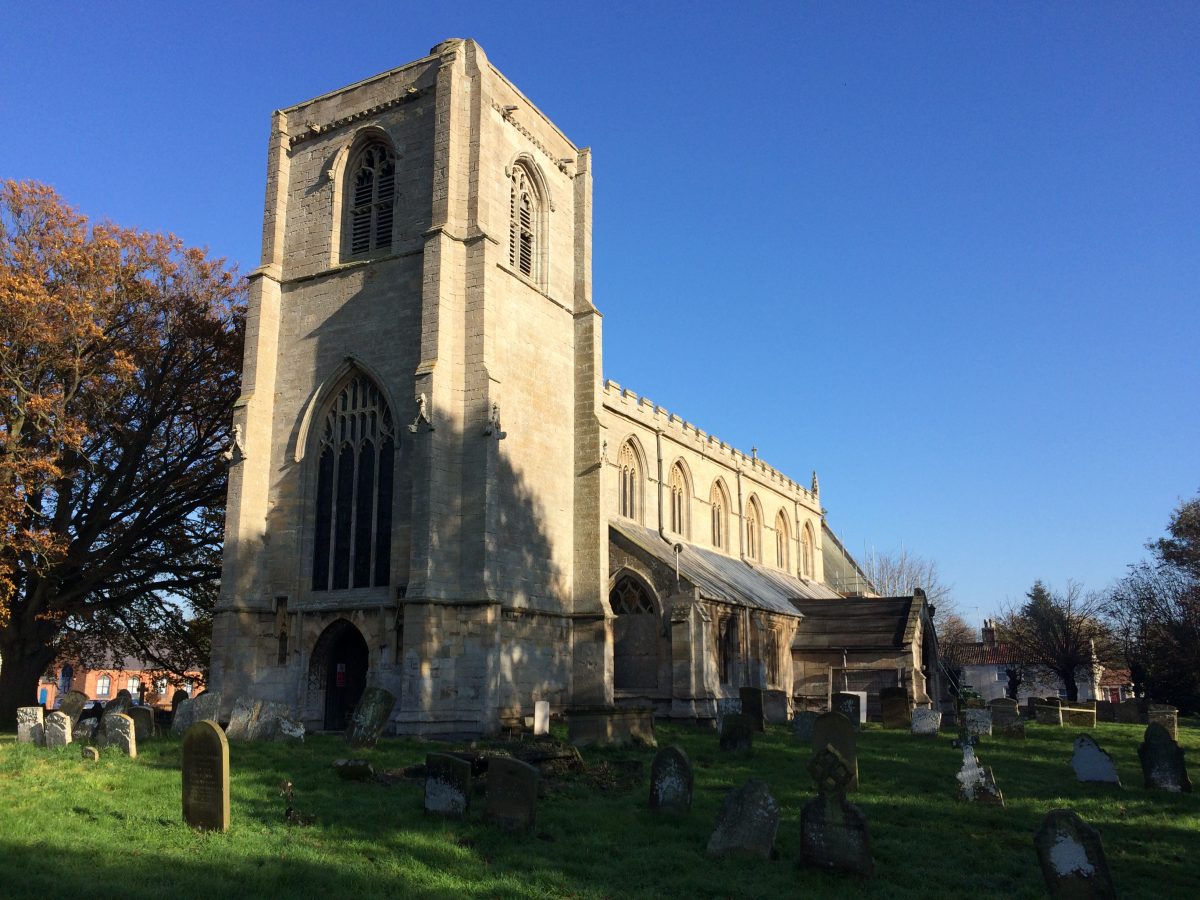Secrets Underneath the Church Floor
The 12th century church of All Saints, Benington is currently being renovated as part of a rural regeneration project that will not only transform this beautiful Grade I listed church, but the entire community of Benington. The £1.8 million project is funded by the Heritage Lottery fund and led by the Benington Community Heritage Trust, supported by the Churches Conservation Trust, to create a welcoming and attractive space to socialise, join community groups, have a cup of coffee and access support programmes.
As work was undertaken to create space for new partitioning walls, our archaeologists on site found a few interesting artefacts. Medieval, post-medieval and Victorian pottery were all found, but more unexpectedly was the discovery of a human skeleton – buried not within, but underneath the church itself. As with any discovery of burials, this sparked the interest of our team members. The research completed before going on site showed that the earliest written records for the settlement of Benington are found in the 12th century pipe rolls (Medieval financial records). The oldest building in the village left standing is the church, of which the oldest part – the chancel – also dates to the 12th century. The fact that this person was buried underneath the church, means that they must be older than the church. So where did they come from?
While we only uncovered part of the burial, it was clear that they had been buried lying east to west, typical of Christian rites, probably in consecrated ground as part of a churchyard. A churchyard requires a church, a church that must be earlier than All Saints. The 11th and 12th centuries saw an explosion in the building of stone churches, many of them were built to replace older timber churches. However, an earlier church also suggests an earlier community, and that the settlement of Benington must be older than the written records suggest.
This shows how archaeology is helping to re-write the history of Benington and who knows what will be found in the village in future to write a new chapter on its history. Our community archaeologist had the pleasure of telling this story to interested members of the local community, students and members of the Churches Conservation Trust this week.
Have you ever wanted to have a go at your own community archaeology and / or heritage project? Learn how we can support you through the process here!

